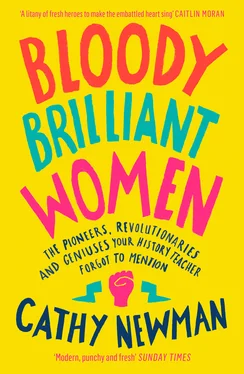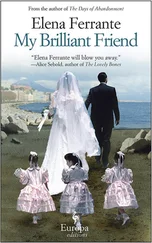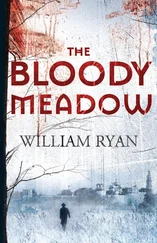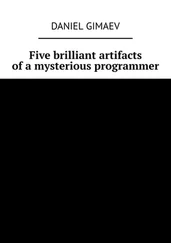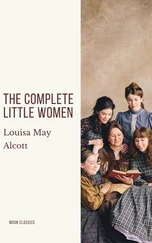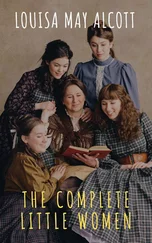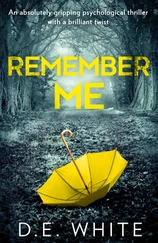1 ...7 8 9 11 12 13 ...21 Emily was fortunate to come from a legally literate family. They filed a writ of habeas corpus, which, if granted, meant Emily could be brought before a court which ought to declare her detention unlawful. But on 16 March, the High Court rejected the application on the basis that, while generally the forcible detention of a subject by another was ‘prima facie illegal’, where the relation was that of husband and wife, different rules applied.
Infuriated, Emily’s family took the case to the Court of Appeal – and, amazingly, got a sympathetic hearing. The Court agreed that Edmund had no right to force his wife to live with him: the very idea was uncivilised and derived from what Lord Halsbury, delivering the first judgement, called ‘quaint and absurd dicta’. The judges suspected that Edmund had married Emily for her money, displaying the sort of predatory behaviour to which men were prone and from which women needed protecting.
Lord Halsbury’s judgement was a landmark because, notwithstanding its reflexive sexism, it rejects the idea of the ‘absolute dominion of the husband over the wife’, calling Edmund’s counsel’s defence of wife-beating ‘outrageous to common feelings of humanity’ and ‘inconsistent with the rights of free human creatures’. This echoed the language of contemporary women’s-rights campaigners, though Lord Halsbury went on to specify instances in which husbands might be entitled to use limited, temporary powers of restraint, if, for example, a woman ‘were on the staircase about to join some person with whom she intended to elope’.18
But while the educated middle classes had the freedom and resources to use the courts in this way, for working-class women in 1880 it was a different story. Their lives, based around laundry and childcare – six or more children was the norm – were exhausting and terrifyingly unpredictable. Money trickled in uncertainly and there was no safety net if it ran out. Everything (clothes, furniture, cooking and cleaning utensils) was in short supply. Any meat was fed to the man of the house as the breadwinner. As a result, girls growing up in working-class households were undernourished, prone to tuberculosis and other diseases, and less able to withstand the ravages of pregnancy and childbirth.
Many working-class women went into service. By 1901, 91.5 per cent of all English servants were women.19 Some started young: as late as 1911, more than 39,000 13- and 14-year-olds were working as servants. The 1870 Education Act had theoretically opened up avenues for women by making education a matter of state provision rather than the whimsical, unregulated gift of charities, churches and other voluntary associations. But many girls were unable to take advantage of school places because their families were poor. A child in service, rather than in school, meant financial security, a situation that is portrayed in Flora Thompson’s semi-autobiographical Lark Rise to Candleford sequence of novels:
As soon as a mother had even one daughter in service, the strain upon herself slacked a little. Not only was there one mouth less to feed, one less pair of feet to be shod, and a tiny space left free in the cramped sleeping quarters; but every month, when the girl received her wages, a shilling or more would be sent to ‘our Mum’.20
Most middle-class families had at least one servant. As the feminist historians Bonnie Anderson and Judith Zinsser pithily observe: ‘For men, the dividing line between middle and working class was usually measured in income; for women, it lay in the difference between being a servant and being able to afford one.’21
Charles Booth estimated that 30 per cent of London families could not live on a man’s wages alone. In order to supplement their husbands’ earnings, working-class wives took on piecework – usually sewing or knitting – either at home or in attics or cellars supervised by a ‘sweater’. Abuse and malpractice in the ‘sweated work’ industry was rife, both at home and in factories. The extent of it was exposed by one of the late-Victorian period’s great whistleblowers and one of the most impressive activists of the era: Ada Nield Chew.
The second child in a family of thirteen, Chew was born on 28 January 1870 to William Nield, a brickmaker, and his wife Jane, in Audley, Staffordshire. At the age of eleven she left school to help look after her family, which included an epileptic younger sister; she fitted in paid work where she could.
After the family moved to Crewe in 1887, Chew found work in the Compton Brothers clothing factory. But it was miserable and exploitative, so in 1894 she sent the Crewe Chronicle a series of anonymous letters savagely criticising the pay and conditions of the women who worked at the factory, especially as compared to those of their male colleagues doing the same work.
This was a risky undertaking, but for Chew the alternative was unthinkable: ‘As long as we are silent ourselves and apparently content with our lot, so long shall we be left in enjoyment of that lot.’22 Bear in mind, when reading this extract from her second letter to the Chronicle , published on 19 May 1894, that Chew had no formal secondary education and taught herself to write by reading novels and magazines:
And now to take an average of a year’s wage of the ‘average ordinary hand’, which was the class I mentioned in my first letter, and being that which is in a majority may be taken as fairly representative. The wages of such a ‘hand’, sir, will barely average – but by exercise of the imagination – 8 shillings [approximately £42 in today’s money] a week. I ought to say, too, that there is a minority, which is also considerable, whose wages will not average above 5 shillings [approximately £26] a week. I would impress upon you that this is making the very best of the case, and is over rather than understating. What do you think of it, Mr Editor, for a ‘living’ wage?
I wish some of those, whoever they may be who mete it out to us, would try to ‘live’ on it for a few weeks, as the factory girl has to do 52 weeks in a year. To pay board and lodging, to provide herself decent boots and clothes to stand all weathers, to pay an occasional doctor’s bill, literature, and a holiday away from the scope of her daily drudging, for which even the factory girl has the audacity to long sometimes – but has quite as often to do without. Not to speak of provision for old age, when eyes have grown too dim to thread the everlasting needle, and to guide the worn fingers over the accustomed task.23
As well as paying for their own materials, women workers had to shell out for hot water to make the tea they drank. Their managers were so inefficient at apportioning labour that the only way the women could earn a living wage was by taking work home with them, which added another four or five hours to the working day – and this had to be fitted in, remember, around household chores like cooking, cleaning and looking after small children.
Once her identity as the author of the letters was exposed, Chew lost her job. But she had been talent-spotted by the Independent Labour Party – a precursor of today’s Labour party – and the burgeoning suffragist movement.
Plenty of other women shared Chew’s passion and panache. By the time Annie Besant helped to organise a strike of the female workers at Bryant & May’s match factory in east London in 1888, Besant was already well known for her part in a notorious obscenity trial. Besant and Charles Bradlaugh, head of the Secular Society she had joined in 1875, used the National Reformer magazine to promote a progressive agenda that included education, suffrage and, especially, birth control. The pair were arrested after they published a cheap book intended to educate poor women about contraception.
Читать дальше
